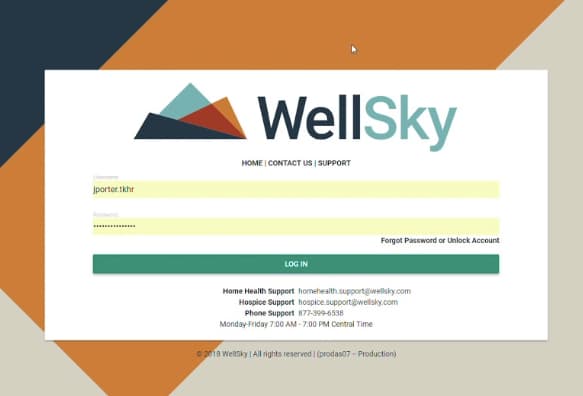Identity and Access Management (IAM) is a modern security solution. It includes several tools to secure identities and access behaviors of users. As the name suggests, identity management is a part of IAM implementation. It refers to controlling and regulating the employee, client, and third-party vendor identities. On the other hand, IAM settles access vulnerabilities. It is a vital feature since access movements pose a risk at both the network perimeter and inside of the network.
Cloud Environments
Firstly, we will explain cloud environments due to the context of the article. Cloud environments are the new place for company networks, apps, and resources. More and more enterprises migrate to cloud environments since keeping all assets in legacy or on-premises networks is costly. According to the statistics, the global cloud application market can reach 168.6 billion USD by 2025.
On the other hand, immigration to the cloud environments increases the need for security solutions. Legacy safety solutions are inadequate to meet the cloud environment’s needs. The necessity for cloud-compatible tools has increased. VPNs, Zero Trust security solutions, and IAM are good examples of cloud environment security.
Furthermore, the remote work model became prevalent and changed access requirements. Cloud environments are more advantageous for remote employees. A remote workforce needs to access company assets remotely. It is not possible when the company relies on physical networks.
Cloud environment security vulnerabilities
Cloud computing is practical and effective. However, it is riskier than the physical environment. Misconfiguration in cloud-based systems poses a risk. Moreover, the lack of access policies increases the breach risk. Companies neglect data security regulations. However, noncompliance costs them expensive. Being compliant with physical assets is simpler. Cloud environments require strict rules and adherence to them.
Cloud data resources are more prone to cyber-attacks. Cybercriminals can capture sensitive data or confidential information on cloud systems with ease. If the company still uses legacy solutions and does not make any provisions against cloud threats, it is very likely to fall victim to a data breach.
The prominent concern for cloud environments is data breaches. As mentioned, personal data, confidential information, and sensitive assets are kept in the cloud. Companies should protect their data resources with an effective tool if they decide to move their digital assets to the cloud. Businesses can implement IAM in their cloud-based systems.
How to Implement IAM in Cloud Environment
Employee analysis and assignment
As a business owner or a manager, you must map your workforce. Detect their job descriptions, roles, and privilege needs. You must know how many remote or hybrid employees you have. Cooperation with HR can be a good idea. HR can give vital information about the profile of your workforce. The requirements of remote and office employees will differ from each other.
Moreover, you should assign them access authorization according to their work models. Companies should determine who can access which resources in Identity and Access Management. Managers or IT should limit user access to the resources. If authorizations exceed the requirements, it creates a security gap. More user access means more breaches. Be sure that all your employees can access the resources as required.
Customer access authorizations
You should manage customer identities and access too. Customers are one of the prominent actors in access security. As an enterprise, you should protect your customer’s data too. Customers give identity and other sensitive data to your company. On the other hand, customers need access to company applications, networks, and even resources. You can lose your customers if they do not trust you.
Your reputation, reliability, and compatibility rely on customer trust. Data breach harms the company’s reputation and causes financial loss. Businesses can protect sensitive customer data by implying IAM. There is a security solution called Customer Identity and Access Management (CIAM). It is a specialized form of IAM solution. Customers are prone to fraud. They share credit card information, and other sensitive data with companies. As a company, it is your mission to safeguard their information. Customer Identity and Access Management adds an extra layer of protection to customer data safety. You can deepen your research to learn more about CIAM implementation and decide whether you need it or not.
Zero Trust Network Access
Zero Trust Network Access (ZTNA) refers to the security solution which embraces the motto of “less trust, more verify.” It is all about diminishing privileges and increasing authentication. As you can see, the fundamental purpose of ZTNA is similar to IAM. They both support identity authentication and access management. ZTNA is also useful in cloud environments. The prior threat against cloud-based assets is unauthorized access. Data breaches and cyber attacks mostly rotted in unauthorized access.
Adopting Zero Trust Network Access can boost your perimeter and internal network security. Moreover, it encourages your management to control access and identities more carefully.
Multi-factor authentication
Multi-factor authentication (MFA) is another tool for cloud environment IAM implementation. Company and customer data should be inaccessible. Only authorized users should see resources. Businesses can benefit from MFA solutions to enhance their access security. Multi-factor authentication takes two or more steps of authentication.
Typing the correct password is not enough to reach sensitive data. Users should prove their identities with one-time codes, biometrics, or e-signatures. This implementation strengthens the security wall of your network assets. In cloud environments, users usually create accounts. These accounts are the indicators of their identities. Companies allocate access permissions to users according to their accounts. So, they must be sure that authorized users try to log in.
Regulatory Compliance
Companies are subject to regulations that have provisions regarding data security. General Data Protection Regulation (GDPR) and Payment Card Industry Data Security Standard (PCI-DSS) are examples. Businesses that comply with these binding regulations can upgrade their security levels because these contain essential safety provisions. On the other hand, they can avoid fines that are born due to non-compliance.
Last of all
Identity and Access Management implementation are crucial in both physical and cloud environments. However, cloud-based protection stands out since cloud environments become prevalent and are more prone to data breaches and cyber-attacks. Implementing IAM in the company’s cloud environments adds an extra layer of security to remote work. On the other hand, it strengthens customer reliability and company reputation. The vital thing is to use proper methods such as planning, role defining and embracing tools such as MFA and ZTNA. Companies must consider the actors. Employees and customers are the prior actors since they have access to the company assets. First, you should protect their data to protect your dignity. Then, you will level up your safety and increase your scalability and productivity.



